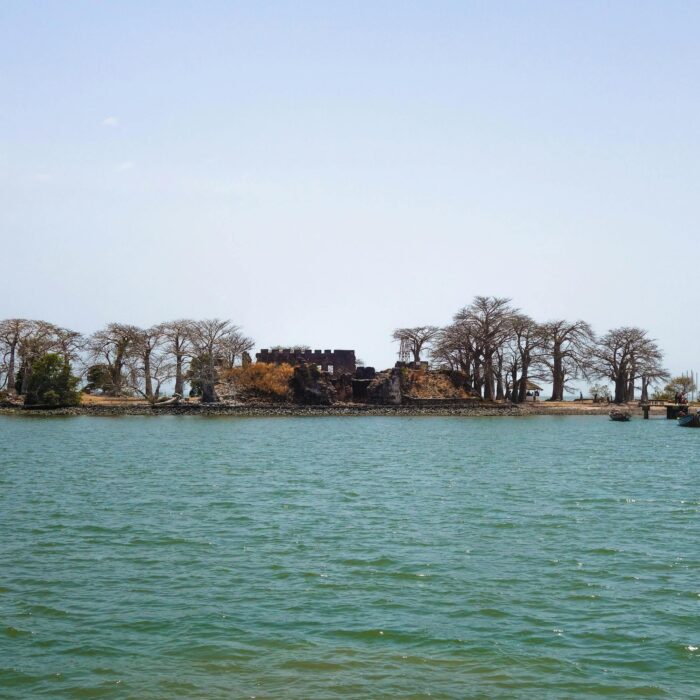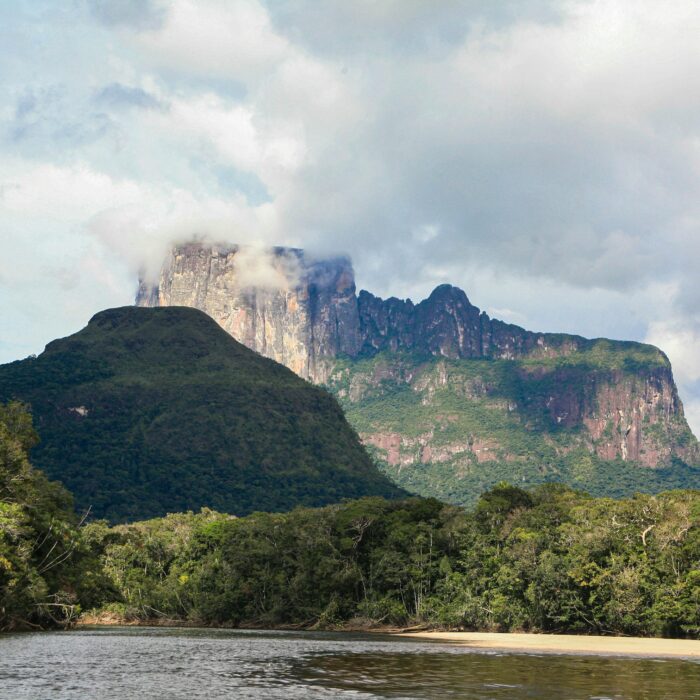Quick facts about Togo:
- Population: Approximately 9.5 million people.
- Capital: Lomé.
- Official Language: French.
- Other Languages: Ewe, Kabiye, and several indigenous languages.
- Currency: West African CFA franc (XOF).
- Government: Unitary presidential republic.
- Major Religion: Christianity, with significant Muslim and indigenous belief communities.
- Geography: Located in West Africa, bordered by Ghana to the west, Benin to the east, Burkina Faso to the north, and the Gulf of Guinea to the south. Togo’s landscape includes coastal plains, rolling savannas, and mountainous areas in the north.
Fact 1: In the past, the coast of Togo was a major center of the slave trade
The coast of present-day Togo was a significant center for the transatlantic slave trade, particularly in the 17th and 18th centuries. This region, along with neighboring parts of what are now Benin and Ghana, was part of what European traders referred to as the “Slave Coast” due to the high volume of enslaved Africans taken from this area.
European traders, particularly the Portuguese, Dutch, and later the French and British, established trading posts and forts along the Togolese coast. These posts served as points for purchasing enslaved people from local intermediaries, who often captured individuals from the interior. From these coastal centers, captives were transported to the Americas under brutal conditions.
While Togo’s role in the slave trade was not as large as that of neighboring Benin or Ghana, the coastal region was still deeply impacted by the demand for slaves, and the legacy of this period remains part of the historical consciousness of the area.

Fact 2: During the colonial period, the territory of Togo belonged to a number of European countries
Initially, Germany established a protectorate over the region in 1884, making it part of German Togoland. Germany developed Togo as one of its most profitable African colonies, investing in infrastructure, railways, and plantations, primarily to cultivate crops like cocoa, coffee, and cotton for export.
After Germany’s defeat in World War I, its colonial possessions were redistributed among the Allied powers. In 1919, under the League of Nations mandate system, German Togoland was divided between Britain and France. Britain administered the western part of the territory, which was later integrated into what is now Ghana. France took control of the eastern portion, which eventually became the present-day Republic of Togo.
French Togoland remained under French administration as a United Nations Trust Territory after World War II until it gained independence in 1960.
Fact 3: There is one UNESCO-protected site in Togo
Togo has one UNESCO World Heritage Site: the Koutammakou, the Land of the Batammariba, inscribed in 2004. This site is located in the northern part of Togo, near the border with Benin, and covers an area of approximately 50,000 hectares. Koutammakou is known for its distinctive mud tower-houses, called Takienta, which are traditional dwellings of the Batammariba people. These structures are emblematic of Batammariba culture and architecture, characterized by their unique shapes and construction techniques using natural materials.

Fact 4: In Togo, there is a festival of initiation into maturity for young people
In Togo there is festival known as Evala, an annual initiation rite for young Kabye men, one of Togo’s main ethnic groups. The festival is held in the Kara region in northern Togo and is a traditional wrestling competition that symbolizes the transition from adolescence to adulthood. Evala typically lasts about a week and takes place in July.
During the festival, young men participate in wrestling matches to demonstrate their strength, courage, and endurance. The event is deeply rooted in Kabye culture, with wrestling seen as both a physical and spiritual preparation for adulthood. The rite also includes fasting, physical exercises, and various traditional rituals performed to strengthen the initiates’ character and spirit.
Fact 5: The capital of Togo is considered one of the most beautiful cities in West Africa
Situated along the Gulf of Guinea, Lomé features attractive palm-lined beaches, bustling open-air markets, and a blend of colonial and modern architecture that reflects its history as a former German and then French colony.
One of Lomé’s key attractions is the Grand Marché (Great Market), a lively and colorful market where visitors can find everything from traditional crafts to fresh produce. The city is also known for its Independence Monument, the National Museum, and the Akodésséwa Fetish Market, where items associated with traditional Vodun practices are sold, drawing interest from tourists and those curious about West African spiritual culture.

Fact 6: Voodoo is still a popular belief in Togo
Vodun (or Voodoo) remains a widely practiced and culturally significant belief system in Togo, particularly in the southern regions of the country. Vodun originated in West Africa, with Togo and neighboring countries like Benin and Ghana being some of its historical centers. Although many Togolese people also follow Christianity or Islam, Vodun is often practiced alongside these religions, blending traditional beliefs with other faiths in a unique syncretic way.
Vodun involves the worship of various deities and spirits, which are believed to govern natural forces and aspects of daily life. Rituals often include music, drumming, dancing, and offerings to the spirits, with priests and priestesses serving as intermediaries between the spiritual and earthly realms. Specific fetishes and sacred objects are also common in Vodun practices, believed to possess protective or healing powers.
Fact 7: Soccer is the most popular sport in Togo
Soccer (or football, as it is known outside the United States) is the most popular sport in Togo. It holds a significant place in the country’s culture and is widely followed and played at both amateur and professional levels. Togo’s national team, known as the Sparrow Hawks, has represented the country in various international competitions, including the Africa Cup of Nations and the FIFA World Cup.
The popularity of soccer in Togo can be attributed to several factors, including the sport’s accessibility and the enthusiasm of fans who gather to watch local matches and support their teams. The country has produced notable players who have gained recognition both locally and internationally, contributing to the sport’s popularity. Players such as Emmanuel Adebayor, who has played for several top European clubs, have become icons in Togolese soccer.

Fact 8: Petrified palm trees can be found in Togo
Petrified palm trees can be found in Togo, particularly in the Petrified Forest of Togo located near the town of Kara in the northern part of the country. This site is known for its unique geological features, where ancient palm trees and other vegetation have undergone a process of petrification over millions of years, transforming them into fossilized remains.
The petrified trees are a significant attraction for geologists, paleontologists, and tourists, as they offer insights into the region’s prehistoric environment and the flora that existed long before the modern landscape took shape. The site is often considered a natural museum, showcasing the history of the Earth and the processes that led to the formation of these fossils.
Visiting the petrified forest provides an opportunity to explore Togo’s natural heritage and understand the geological history of the region, making it an interesting destination for those interested in both nature and science.
If you are planning a trip, check to see if you need an International Driving Permit in Togo to drive.
Fact 9: Togo has large phosphate deposits and it is one of its main exports
Togo is known for its large phosphate deposits, which are a significant part of the country’s economy and one of its main exports. Phosphate rock is primarily used in the production of fertilizers, making Togo an important player in the global agricultural market.
The country has substantial phosphate reserves, estimated to be around 1.3 billion tons. The Kombaté mine and the Hahotoé mine are two notable sources of phosphate in Togo. The mining and export of phosphates have contributed significantly to Togo’s economy, providing jobs and revenue for the government.
In recent years, Togo has aimed to increase its phosphate production and improve the processing of these resources to add value before export.

Fact 10: Togo is home to several national parks that showcase a diverse range of landscapes and wildlife
The country’s geographical diversity includes coastal areas, savannas, hills, and forests, which contribute to its rich biodiversity. Here are a few notable national parks in Togo:
- Kéran National Park: Located in the northern region, Kéran National Park is known for its varied landscapes, including savanna, forests, and rivers. The park is home to a range of wildlife, including elephants, various antelope species, and numerous bird species. It also features scenic waterfalls and is a popular destination for ecotourism.
- Fazao-Malfakassa National Park: This park is situated in the central part of Togo and is one of the country’s largest protected areas. It features a mix of dense forests and mountainous terrain. The park is known for its rich fauna, including monkeys, bushbucks, and diverse bird species. The scenic beauty of the park, combined with its ecological significance, makes it an important conservation area.
- Agoé-Nyivé National Park: Located near the coastal city of Lomé, this park encompasses a variety of ecosystems, including wetlands and coastal areas. It is vital for bird conservation and is home to several species of migratory and resident birds, making it a popular spot for birdwatching.

Published November 03, 2024 • 8m to read





